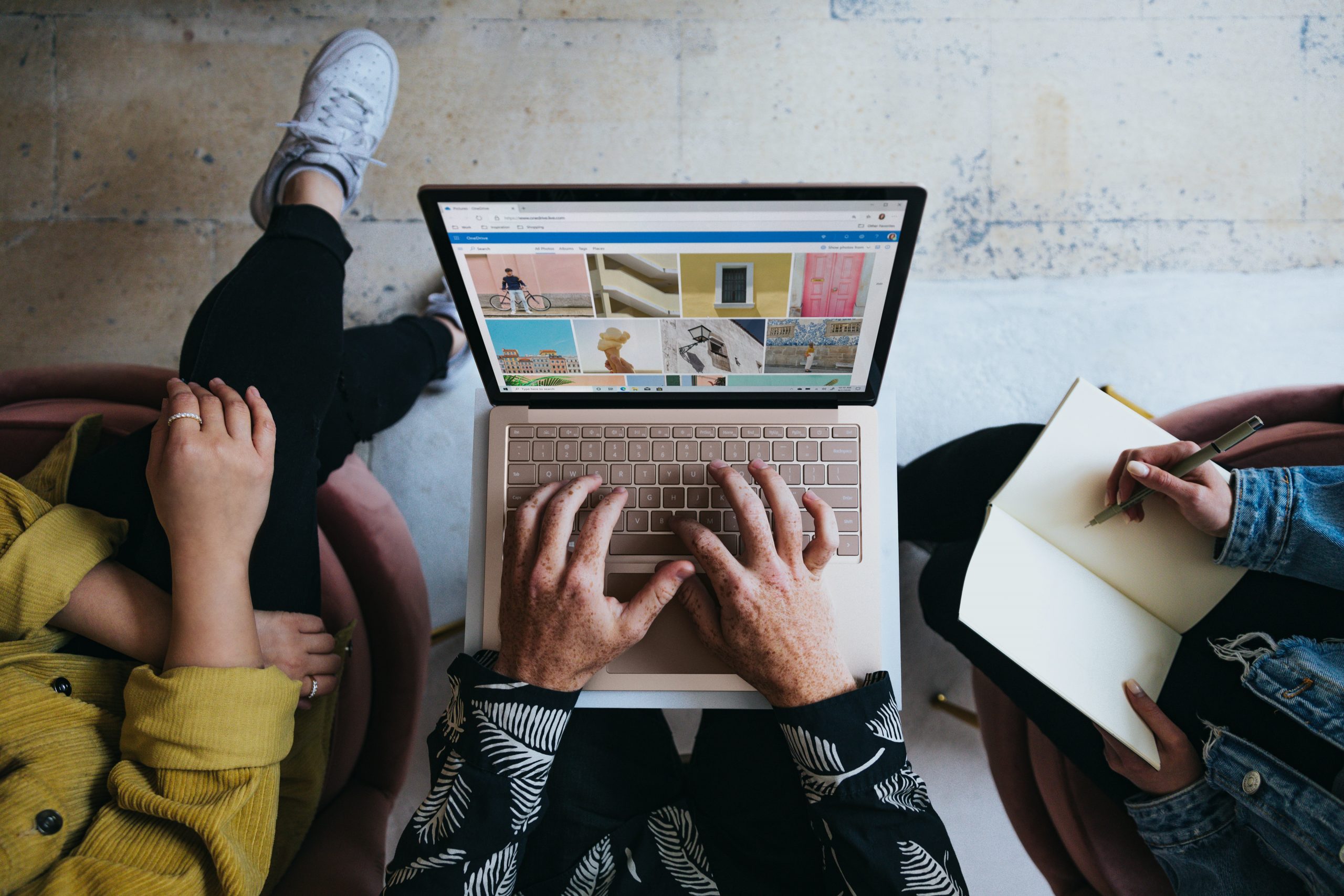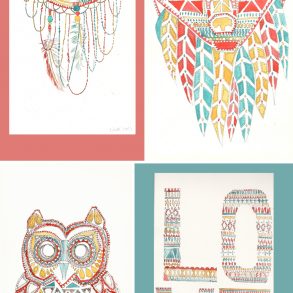Our Textile Design Lab community has been busy over the last couple months. We just wrapped up generating a large collection of work that will be presented at the upcoming Blue Print show. Prior to this activity we held our annual “Summer of Creativity” course. Members have been active on our private forum, supporting each other through this enriching process and helping each other tap into their innate creativity. This feeling of community and camaraderie is the most important part of our TDL platform. Tutorials can be found anywhere, but this community is unlike any other online community in our design field. We’re celebrating this community through Collaboration for Designers, which begins on September 28th inside the TDL.
In this course, you’ll learn the importance of working alongside other designers whether they be peers or clients, how to handle conflicts when they arise, and how collaboration will enrich your design process. You will identify your strengths and what challenges you when working with others. You will practice your new-found skills giving you the confidence to put them into action.
There are so many benefits to collaboration, but in an industry where so many of us work in isolation, it can be amazing to step outside our usual workflow and check in with others.
Collaboration can help you:
Broaden your perspective. The act of sharing ideas and bringing different minds together will help broaden your design perspective and make you a more well-rounded designer. You might draw a rose a certain way, or approach a design challenge in the same way, but your partner might have a new technique or new insight to share. In a good collaboration, you won’t dilute your own style, just add a tool to your toolkit that’s outside of your own design bubble.
Hone your communication skills. Communication is one of the most important aspects of a successful collaboration. Working with other designers helps you practice expressing your ideas verbally, through writing, and through images. It also helps you learn how to give and accept constructive feedback. These are critical skills to develop whether you want to freelance, work in-house, sell your own product line, or really pursue any other avenue in this industry (or any industry for that matter…good communication is universal!)
Gain insights. Collaboration helps add sophistication to your design review skills. You may find you gain a deeper understanding of why a particular design works or doesn’t work, and what exactly you like or dislike about it, beyond simply “I like it” or “I don’t like it.” This can be useful when creating patterns in the future. You might find that you don’t like patterns with only one motif because they feel too repetitive, of that you love free-flowing layouts, because it’s easy to disguise a repeat.
Make connections. A collaborative relationship can serve as a launching point for networking and increase your circle of contacts in the textile design world. The textile design community is still relatively small, and collaborating with a design partner or client is a great way to get to know some of their connections as well, to be able to make introductions, all of which enriches our community!
Double your resources. Two heads are better than one. Not only can you share knowledge and techniques, but you can also share books, art supplies, or split the costs of exhibiting at a tradeshow. We’ve all been in a situation where we’ve been staring at a computer screen for too long, and maybe don’t have the most objective view. It can be great to bring in a design partner who has a fresh, unbiased perspective on the artwork and can notice any flaws or suggest improvements.
Ease the workload. Divide and conquer! Collaborating also allows for more variety in your workday with the opportunity to switch up tasks as you go. Working alone, you might have to be a trend researcher, pattern designer, salesperson, accountant, IT person, all in one day. If you have someone to collaborate with, you can alternate who takes on what, so that no one burns out on any one task.
Build camaraderie. Working by yourself can be quite lonely at times, and having that team mentality of “we succeed or fail together” can help keep your motivation and morale up. Together you can celebrate successes, commiserate when there are setbacks, and build momentum to finish projects sooner than you might alone.
Ways To Collaborate
Collaboration can take many forms. One designer might lay out a rough sketch or concept for a print and another designer might polish it off, and yet another designer might complete the repeat or finalize the color palette. Each designer has provided important input into the final look of the print, and the print would not be the same had it not been touched by each of their hands.
Another form of collaboration could be completely verbal on one side. For instance, a designer who gives lots of direction and has strong ideas about how the print should look, but does not contribute to the actual drawing or painting of the work. This is an interesting way to flex your design muscles on both sides of the collaboration!
A third option could be two designers starting with a unified theme (maybe based on a trend board), retreating to create print concepts on their own for a while, and then bringing them back together to see which ones worked best, or even what pieces of each worked best that could then be joined into one successful print.
Design collectives, too, often have a collaborative relationship and represent designers who have many different styles. They may make suggestions about what motifs or styles will work best for their customers, or adjust colors or scale before printing samples to ensure that there is the greatest chance for sales for the collective.
Collaboration for Designers
In our upcoming Collaboration for Designers course, we demystify the collaboration process. And touch on a number of BIG questions, such as:
- “How do I handle conflicts when they arise?”
- “How can I clearly communicate my ideas when working with someone long-distance?”
- “What are my strengths when working with others and what do I struggle with?”
If you’re interested in learning how to get the most out of your design collaborations—or if you’ve never collaborated, and want to get started on the right foot—then we’d love to have you join us.
Collaboration for Designers runs for two weeks, with one lesson per week day. A small task can be found at the end of each lesson, and we will ask that members share their tasks on the “Collaboration for Pattern Designers” forum for feedback. We will also be working through two larger assignments which should be posted to the forum by Sunday of each week. Throughout the week, we invite members to share their progress on these assignments if they would like additional feedback.
If you’ve never worked collaboratively, or you’re not a fan of working this way, it can be a bit overwhelming. But the benefits of working with others far outweigh the negatives. You will grow as a designer by opening your mind to other perspectives, you will develop important communication skills, and you will make connections that could become key industry contacts down the road!
Our Course Schedule
WEEK ONE
Lesson One: Introducing collaboration
Lesson Two: Keeping everyone on the same page
Lesson Three: Communicating at a distance
Lesson Four: Benefits and challenges of collaboration
Lesson Five: Handling criticism and giving feedback
Assignment #1 due by Sunday night
WEEK TWO
Lesson Six: Looking inward
Lesson Seven: Who do I want to work with?
Lesson Eight: Fighting for your ideas
Lesson Nine: When to call it “finished”
Lesson Ten: Resources & putting this all into practice
Assignment #2 due by Sunday night
Ready to get started? You will automatically be enrolled in the Collaboration Group-Study when you register for the Textile Design Lab. Join us here.











